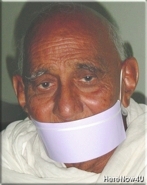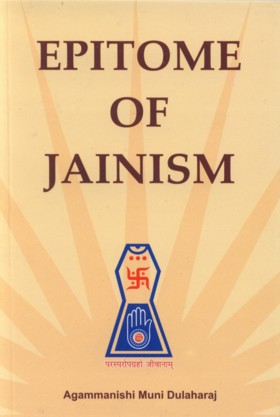He was a prince of extraordinary valour and courage. Time had changed. His mind was disturbed when he witnessed violence being practiced in the name of religion. Animal sacrifice was in vogue. Social evils too, like slave trade were rampant. Many learned people favoured these violent activities and did their best to enhance it. They had a firm grip on the general masses and a way out was blurred by arousing in them a fear of hell in case they did not abide by the dictum of the Holy Scriptures. Slave trade was never considered immoral. It also gained the recommendation of the so-called great and religious people. Casteism gained ground in the society. No-body was bold enough to raise his voice against it. It was established to be a gospel truth. anybody opposing it the Considered an out-caste and ostracised from the society.
Mahavira did not work to eradicate these evils, but he was bent upon practicing the principle of non-violence to the highest point and thus became perfect in self. Self-perfection goes ahead in purifying others. He thought that when non–violence manifests itself, all the evils are automatically rooted. The ever burning fire of passion and a strong desire to possess things which others had extinguishes itself. Nothing ignoble raises its head in the wake of non-violence. To attain this end he went from place to place and exhorted the people to follow the righteous path of Ahimsa.
Mahavira rebelled against the complete dominance of the Brahmins and attacked the established priesthood. He underwent severe penances. His meditation and concentration were unequalled.
One day when he was seated in meditation. His eyes half closed. His mind was completely tranquil, hence immune to external perception, a marvellous light transcended all that had never been seen or experienced before. His Self was filled with radiant splendour that emanated from the inner consciousness. He became enlightened with hundreds of thousands of sunbeams scintillating within and beyond his body. His face gleaming with light filled the whole atmosphere with the light of spirituality. Now the duality disappeared. Knowledge and the knowledgeable became one. The things of perception were explicit. There was no hindrance of time or space. The Karmas which obstruct the manifestation of complete perfection were dissolved. He became omniscient and omnipotent. Now he was free from the passions and attachments which represented the intoxicating forces of the external world. His realization was perfect. The entire world was the object of his perception and he saw it all as clearly as one sees an Amla fruit lying in one’s palm. In this state of enlightenment his knowledge and perception were way beyond what the ordinary human beings could even dream of. It was the thirtieth year of his Sadhana. After attaining this perfection he began to preach.
Once on his way to Pavapuri he reached a small village. There he came to know that a big Yagna was being performed by a Brahmin called Somila. Great scholars from far and wide had come to participate in that Yagna. When they came to know about the arrival of Mahavira, their minds became filled with the arrogance of academic knowledge. They were determined to drag Mahavira into philosophical discussions so as to defeat him and make him a disciple of their creed. First of all, ‘Indrabhuti’ went to Mahavira with great pomp and grandeur. Mahavira was a great psychologist. He read Indrabhuti’s mind and hit out at his arrogance by putting forth a question regarding the existence of self - an issue which had been baffling him right from the beginning. Indrabhuti was flabbergasted to hear this question from Mahavira - the answer to which was altogether unknown to anyone but himself. Indrabhuti accepted his defeat and became the disciple of Mahavira. Later on, he became the foremost disciple and head of Mahavira’s Tirtha.
The Mahavira’s Tirtha consisted of seven units. Each unit had its head, who worked within his own jurisdiction. The units were:
| ACHARYA | He was the whole and sole of the Sangha. His main duty was to interpret the Shastras preached by the Lord. |
| UPADHYAYA | He was in-charge of the education of the whole gana. His main duty was to teach the scriptures and make the students recite them correctly. |
| STHAVIRA | Monks disturbed by physical or mental afflictions and intending to sever their connection with the Sangha were well looked after by Sthavira and were exhorted and inspired by him to be obedient and sincere in practising the law of renunciation. |
| PRAVARTAKA | He had to work under the guidance of the Acharya in engaging the monks in service wherever needed. He had to work for the propagation of the religion and accelerate its growth by properly assisting the monks who worked for it. |
| GANI | He was a group leader of monks who directed them in regular practices of religion. |
| GANDHARA | He had to look after the routine work of the monks to ensure that all the activities were in accordance with the rules enunciated. |
| GANAVACHEDAKA | All these seven posts required special personalities possessing extra-ordinary qualities to discharge their duties. All of them were nominated by the Acharya with the consent of the Sthavira. |
Thus the entire Sangha of Mahavira was well organized. It lit the path of emancipation for hundreds of thousands of aspirants and raised its voice against immorality which was adhered to by so called ‘religious’ people in the name of religion. It gave a clarion call to rouse one's self from the slumber, indolence and thoughtlessness; and made one conscious of one’s own infinite strength that lies latent. It also awakened in common people an indomitable will to achieve the greatest of all conquests - the conquest of self, so as to escape from the real snares of passion, lust, rancour, anger, pride, deceit and sensual gratification.
Those aspirants who followed the admonitions of the Sangha went ahead like a racer leaving behind the track. They learnt the art of self-sacrifice and were the awakened among the sleepers, the earnest among the thoughtless.
Mahavira had 14,000 monks and 36,000 nuns in his order. Chandanbala headed the nuns and looked after their welfare.
It was a unique feature of Mahavira to initiate womenfolk in the Holy Order and give them equal right to work out and achieve their own emancipation. He made no distinction, whatsoever, between man and women as far as the practice of religion was concerned. This thought awakened a feeling of self-respect among the women and made them conscious of their value and strength to come out of laziness and eradicate all the evils and tore apart all the snares which bound them and made them a puppet in the hands of men. They realized their duties and thought that their first and last duty is the conquest of Self. One who conquers Self is a greater conqueror than the one who conquers in battle a thousand times a thousand warriors. Many women ventured to tread the thorny path of renunciation. They went from place to place, like monks, and exhorted the masses in religion without any distinction. Thus a revolution was witnessed in the whole society and many people were galvanized into action.
The religion of non-violence was manifested in different forms, which influenced the activities of the people restoring them to the real practice of self-restraint. Violence - the law of the brute - was hit hard. Its intensity was lessened and slowly and gradually it died on its own accord.
Mahavira became a monk at the age of thirty. For twelve and a half years he lived a life of severe penance and austerity. He attained enlightenment and preached for 30 long years. He gained a legion of followers who were from all races and walks of life. His life was full of adventure and forbearance. He visited many places. His itinerary speaks of his unending zeal and enthusiasm played a vital sole in the propagation of religion.
He breathed his last in B.C. 527 at Pavapuri in Bihar, where a shrine has been erected and is maintained even to this day.
 Agammanishi Muni Dulheraj
Agammanishi Muni Dulheraj
